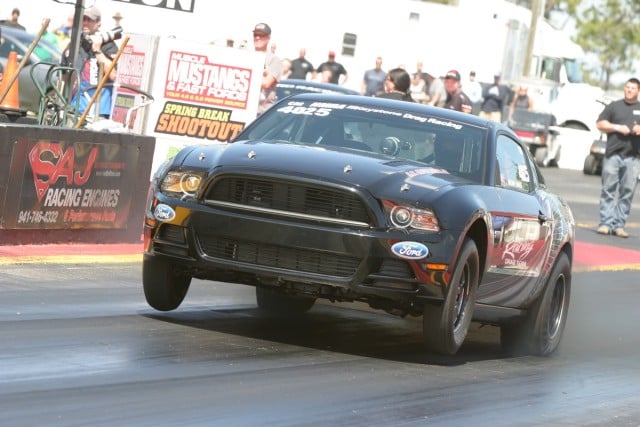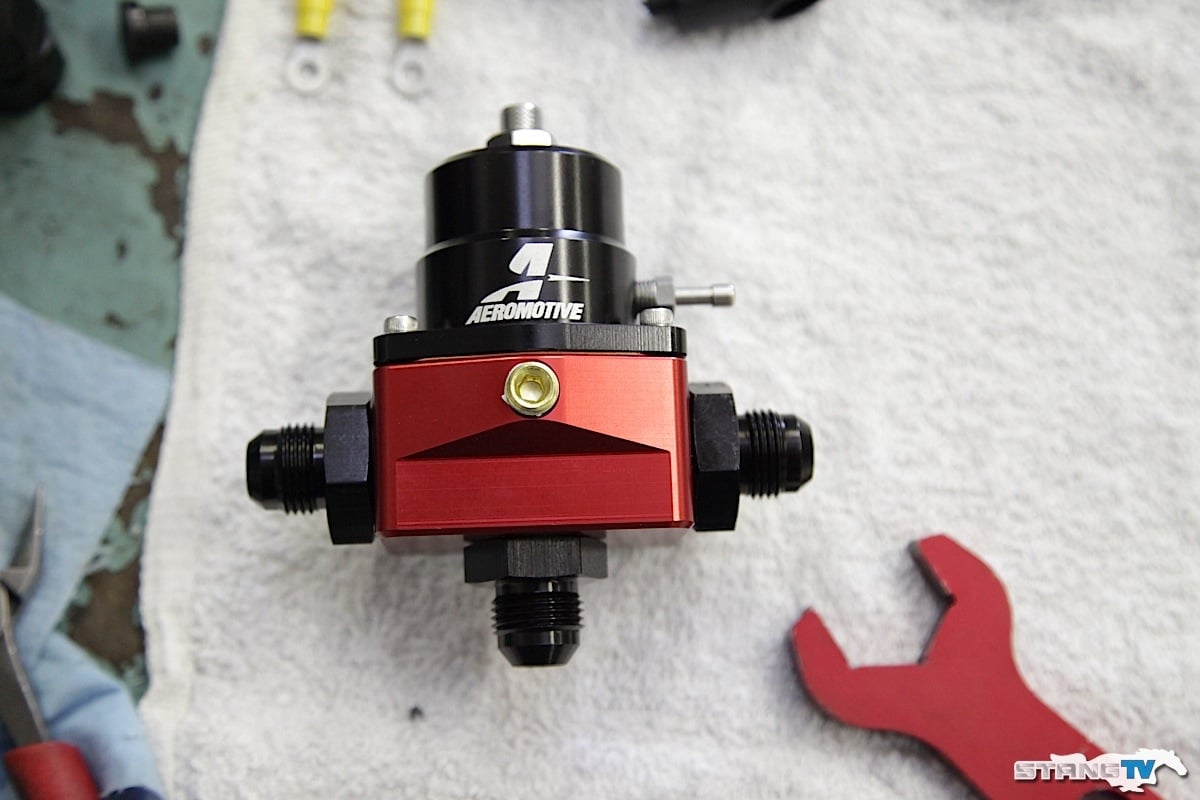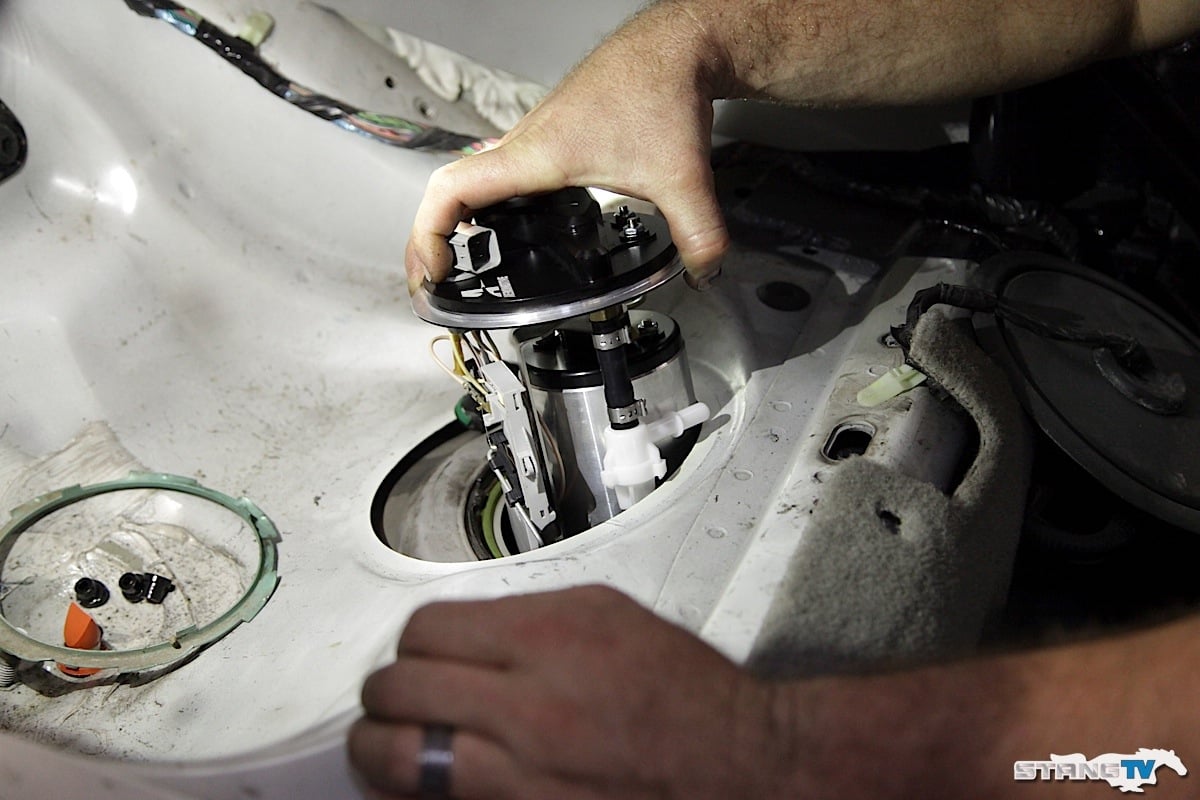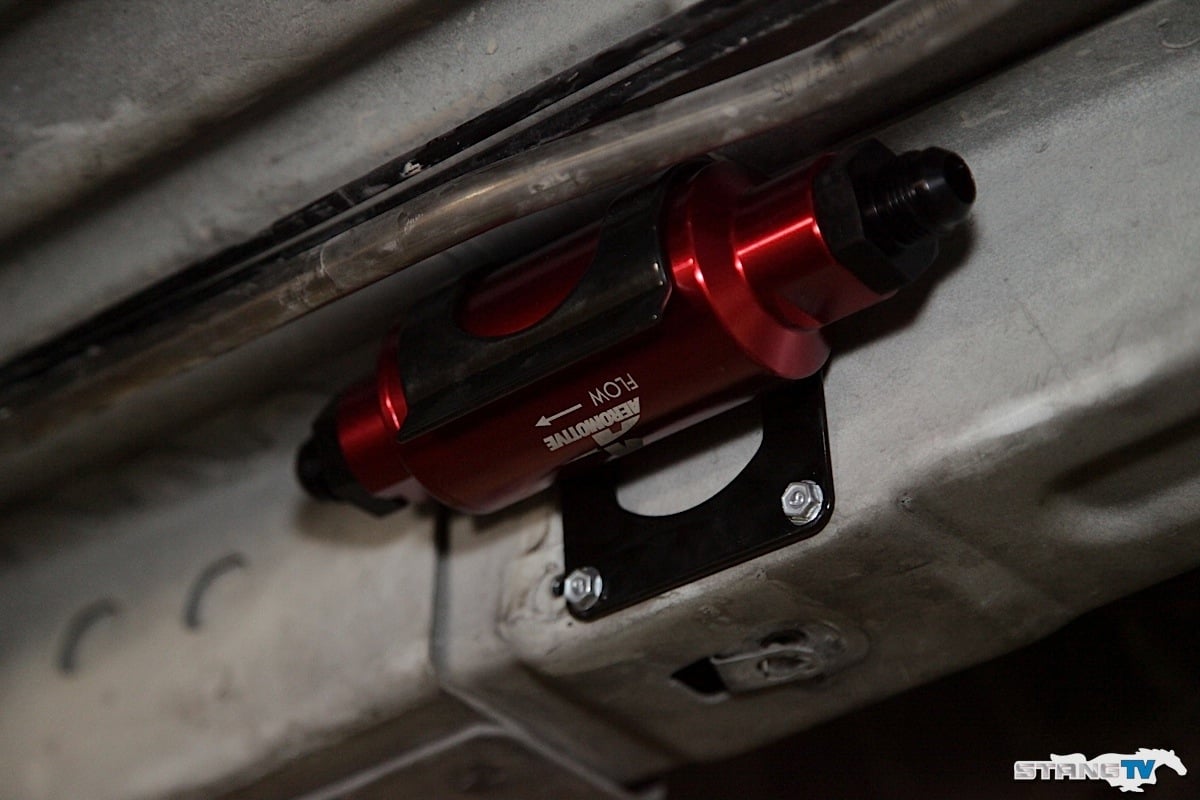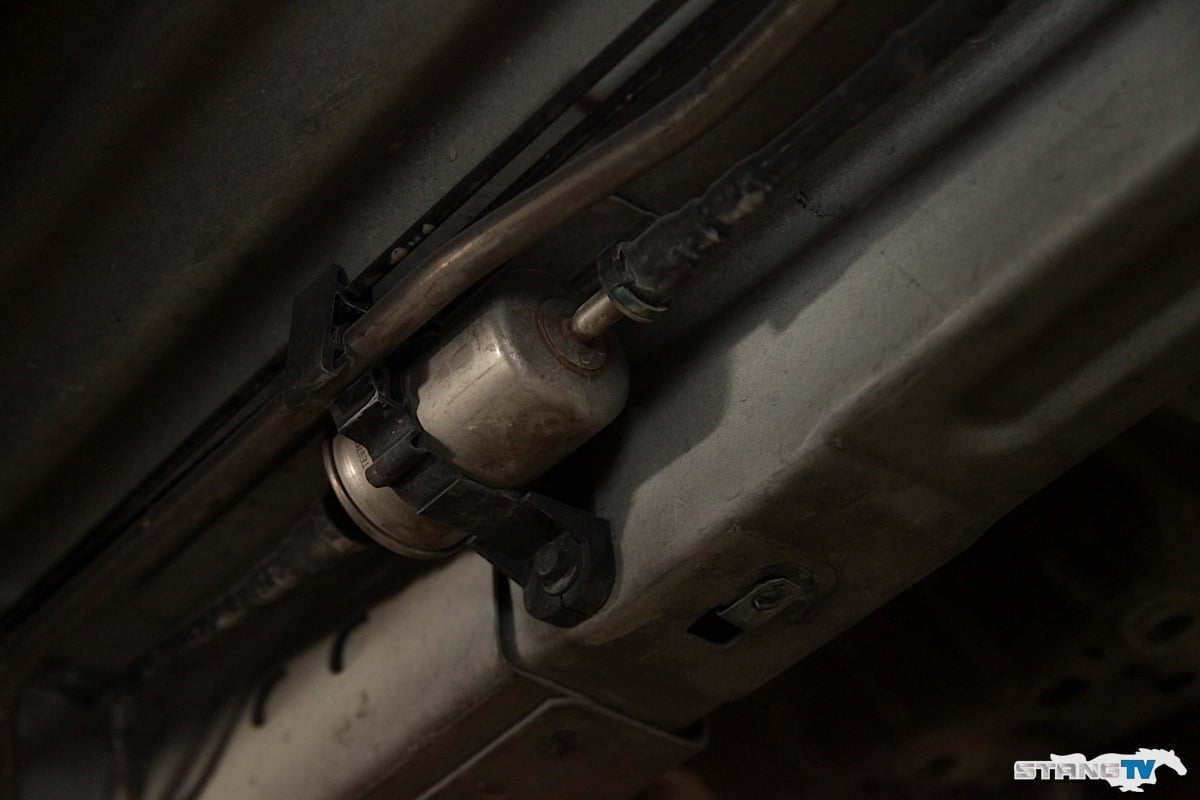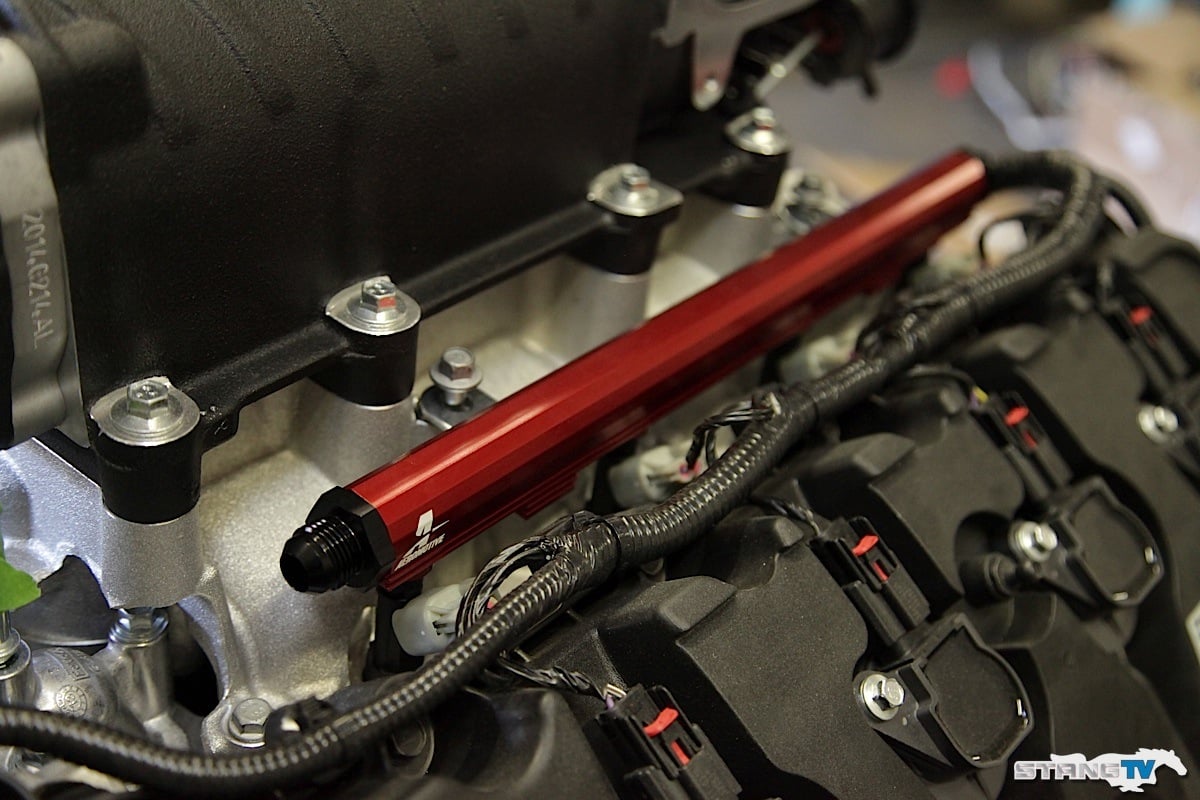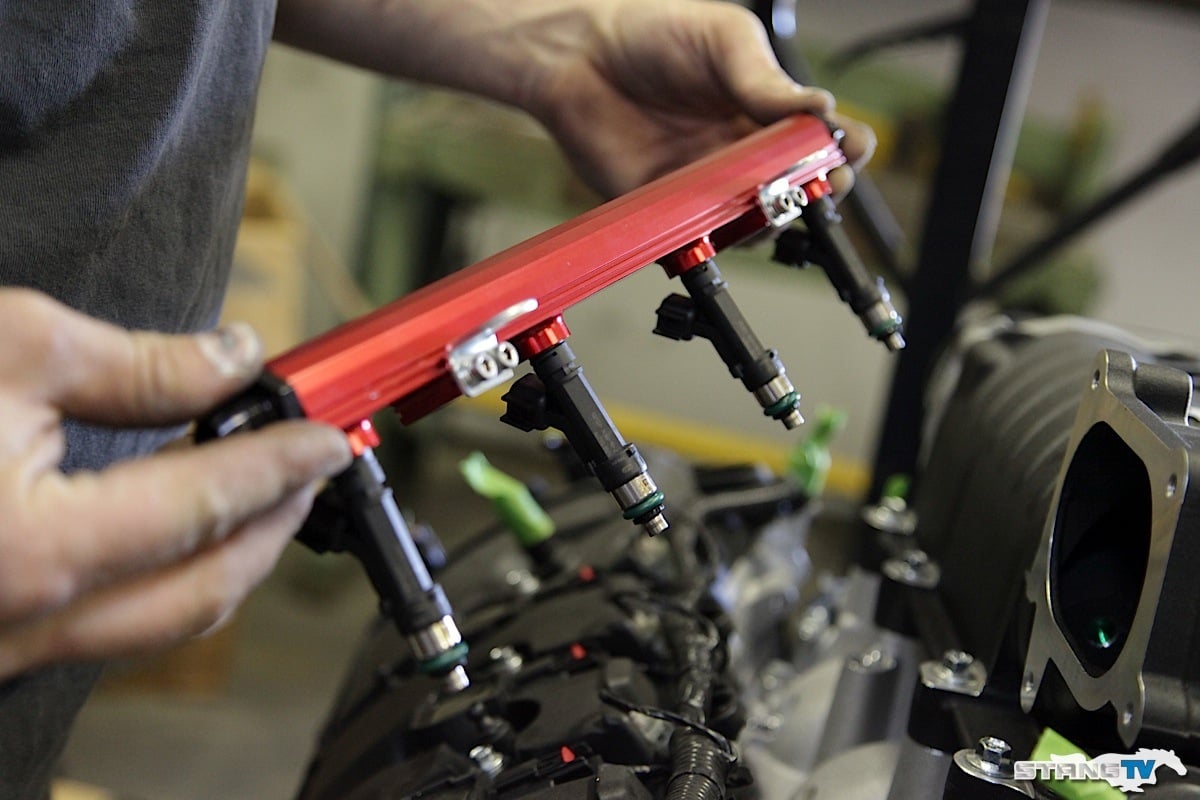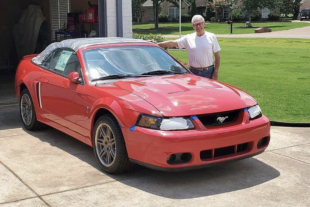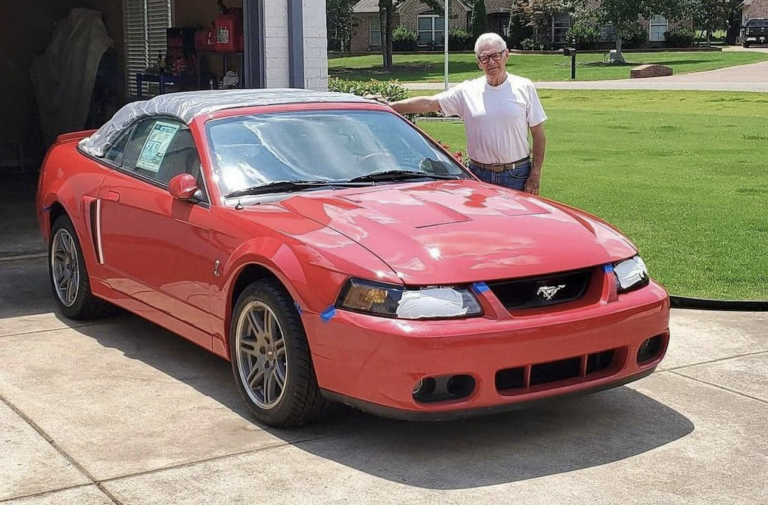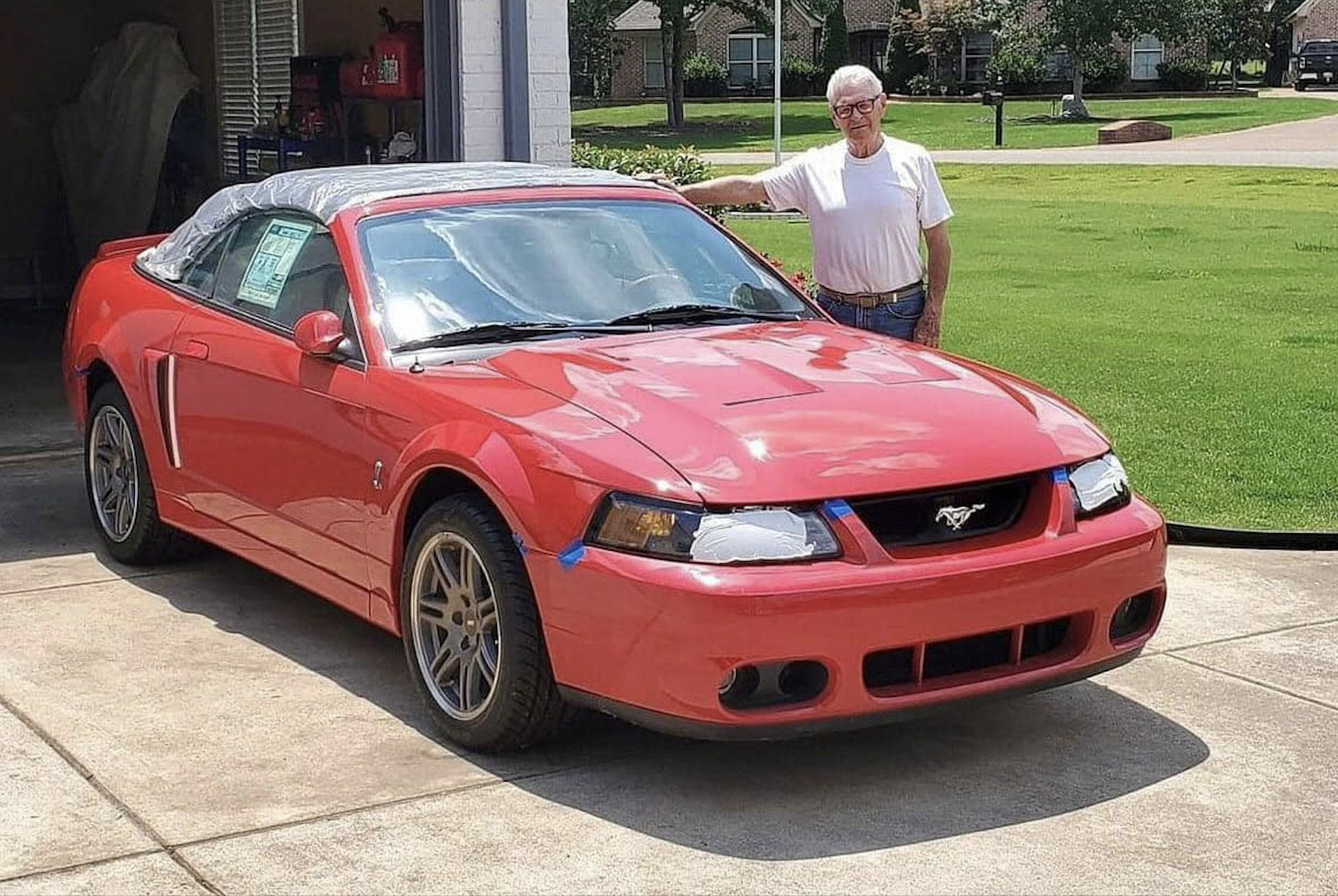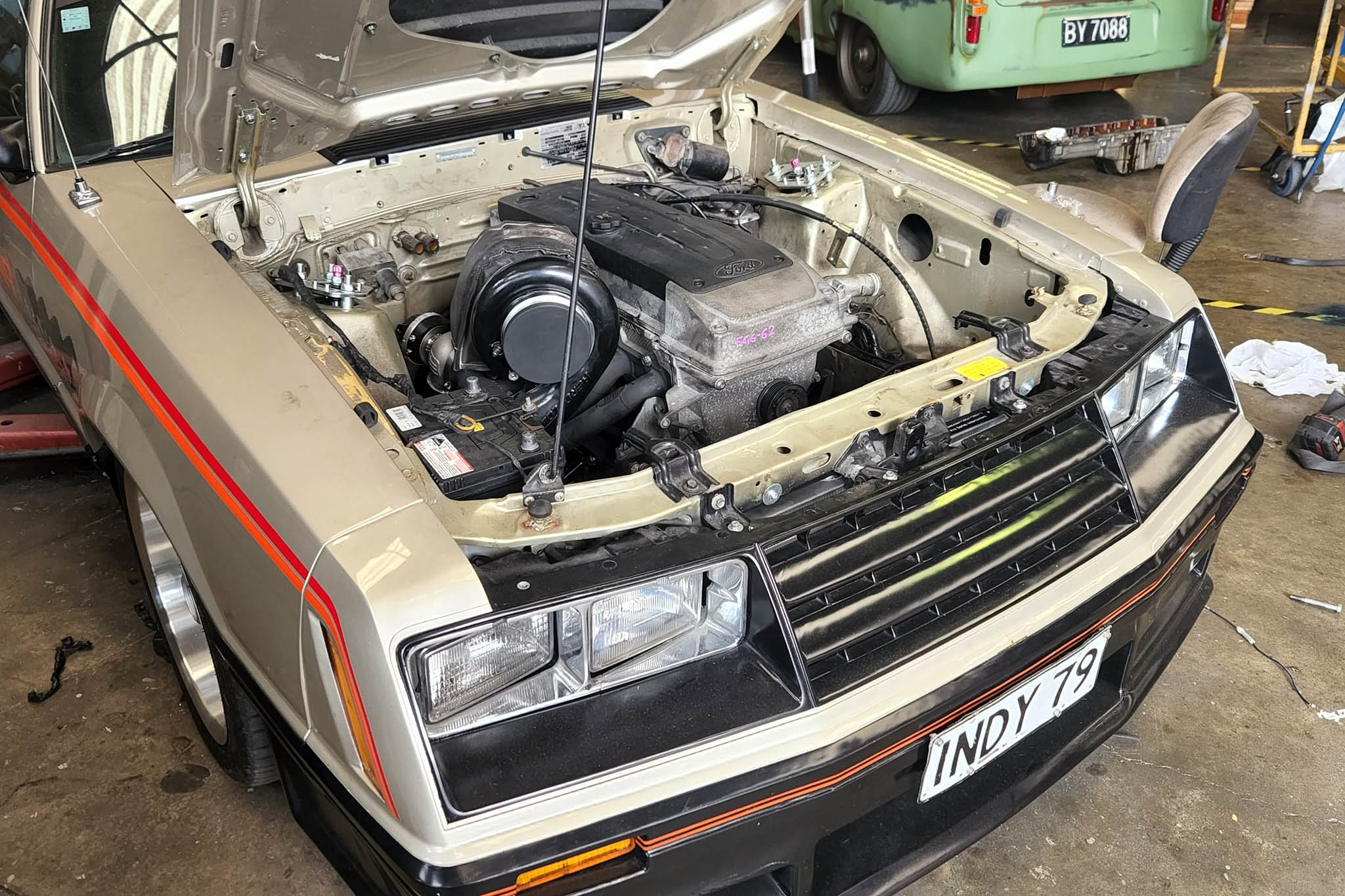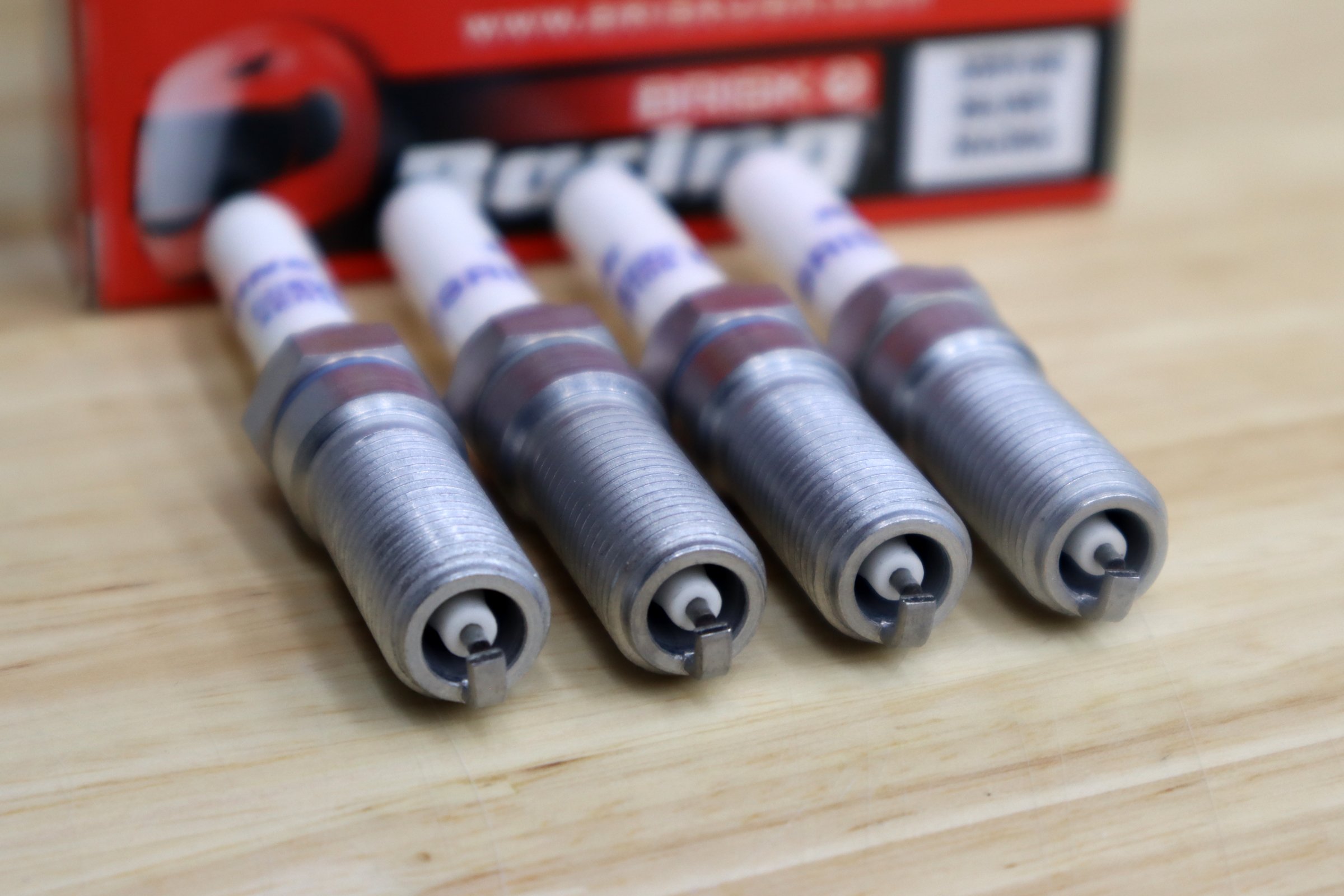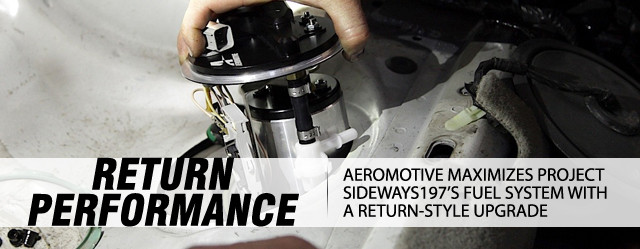 With older fuel systems like in Fox and SN95 Mustangs up through the 1998 model year, there’s a feed line, a return line, and a fuel pressure regulator to regulate the system’s pressure. Since this type of system has a return line it is known as a return-style fuel system. In this system, the fuel not consumed by the engine returns to the tank, and up until the 1999 model year, all Mustangs used this type of fuel system.
With older fuel systems like in Fox and SN95 Mustangs up through the 1998 model year, there’s a feed line, a return line, and a fuel pressure regulator to regulate the system’s pressure. Since this type of system has a return line it is known as a return-style fuel system. In this system, the fuel not consumed by the engine returns to the tank, and up until the 1999 model year, all Mustangs used this type of fuel system.
With this arrangement, you simply swapped in a bigger pump and supplied the engine with the amount of fuel you wanted it to have via the pump and the pressure at the regulator. A return-style fuel system uses the fuel pressure regulator as a method of returning fuel to the tank. Aeromotive, Inc. specializes in this type of fuel systems for performance-based applications.
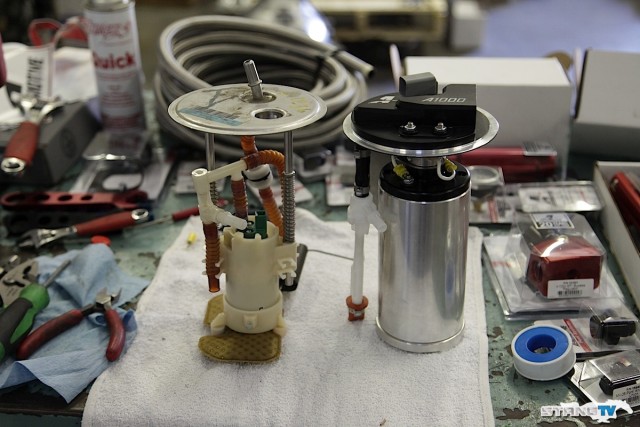
Here’s Aeromotive’s A1000 fuel pump assembly for 2005-’09 Mustangs. It’s designed to be installed in place of the factory fuel pump assembly, yet be able to support 1,000 horsepower.
Beginning in 1999, Ford equipped the Mustang with a returnless fuel system. With a returnless fuel system you have to provide the engine with the right amount of fuel, since there is no provision for returning excess fuel back to the tank. In place of a return-style system’s fuel pressure regulator, a returnless system uses the onboard computer, a fuel pump driver module, and a fuel rail pressure sensor.
Those three basically replaced the return-style system’s fuel pressure regulator. Don’t misunderstand, fuel pressure regulators do go bad, but it’s pretty rare. Ask how many people have had to replace their Mustang’s fuel pump driver module or fuel rail pressure sensor, and you’ll find a mechanical fuel pressure regulator is much more reliable.
Blowin' Black Smoke
When you see cars going down the drag strip billowing black smoke, they aren’t blowing carbon build-up out of the engine like what happens with many street cars, it’s because the fuel mixture is rich. The tuner dials in a little more fuel just to be safe. Racers add in this little safety measure in case the engine sees a spike in boost, which could throw off the car’s air/fuel ratio, causing a lean condition. Being a bit on the safe side will be the difference in whether or not the racer’s engine lives to see the next round of action.
With ’05-’14 Mustangs, like project sidewayS197, many high-horsepower enthusiasts add a return-style setup so they can have more control over the system, and also implement a boost-referenced fuel pressure regulator, so fuel pressure increases under boost. After all, when many people increase their Mustang’s horsepower these days it’s through the use of a supercharger or turbocharger.
With a return-style fuel system, like what we install here from Aeromotive, it’s almost an insurance policy for your engine. If you have a return-style fuel system, you have a margin for error. You can dial in a fuel curve with a little extra fuel in it to keep the fuel mixture on the rich side.
The ideal air/fuel ratio in many tuner’s eyes is 14.7:1 for cruise and idle, which equates to 14.7 parts air to one part fuel. The air/fuel ratio is of course the ratio of air compared to how much fuel is entering the engine. A higher air/fuel ratio is a leaner mixture since that means more air is entering the combustion chamber compared to the amount of fuel. With a power adder combination, many people like to see the air/fuel ratio a little richer, down around 11.7:1 to be on the safe side. Which means there’s more fuel in the mixture to keep exhaust gas temperatures low, and allow more fluctuation in fuel quality.
Top Row: Possibly the two most important components in a return-style fuel system are the pump and the regulator. The pump provides the fuel, while the regulator makes sure your Mustang's engine has the right amount of fuel pressure going into it. Aeromotive's A1000 replacement pump installs in the S197's factory fuel pump location (Right). There's an installation access hole under the rear seat that is used to remove the factory fuel pump and install the Aeromotive A1000. With the regulator (Left), sometimes the hardest part is finding a mounting location for it. More on that later. Bottom Row: The Aeromotive A1000 Stealth system includes an inline filter (Left). With the stock fuel filter removed, the Aeromotive filter is installed right in its place in the included bracket. It's pretty fool-proof to install a fuel filter, just makes sure the fuel flow follows the arrow on the filter.
Why a Return-Style System
On the other side of the coin, the biggest reason for adding a return-style fuel system to a late-model Mustang is that the stock fuel system isn’t up to the task of what’s being demanded by the engine. Many believe that going the multi-pump route within a returnless system is just a band-aid for the problem, while the ultimate fix is to install a return-style fuel system. “You can support more fuel pressure and it gives you more stability.” Lippincott says.
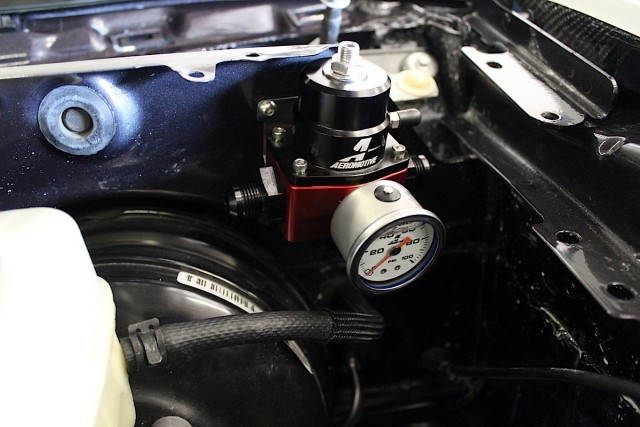
We mentioned possibly the toughest part of a fuel system install is finding a place to mount the fuel pressure regulator. On an S197 car, sometimes the best place to mount it is the driver side firewall area like in this image. This is primarily where most people mount the regulator.
The system we feature here, from Aeromotive, is a complete return-style fuel system for 2005-’14 Mustangs. This system in particular is from Aeromotive’s Stealth line of fuel systems. It includes a drop in A1000 pump assembly, part numer 18676, available from Jegs.com as 027-18676. Also included is a fuel pressure regulator, fuel rails, fuel line, and all required hardware and electrical connections.
Aeromotive has two fuel systems available; one being the Eliminator fuel system, and the one we used here, which is the A1000 fuel system. The Eliminator system comes with the Eliminator pump, while the A1000 system comes with an A1000 pump.
According to Aermotive, the Eliminator fuel pump is capable of supporting up to 1,400 hp in a forced induction environment, and up to 1,900 hp in a naturally aspirated scenario.
Our very own Project Sideways S197 boasts a Coyote engine swap with a Roush TVS supercharger added for an extra kick. In this instance, the Eliminator system is a bit overkill, so we opted for Aeromotive’s A1000 Stealth fuel system.
Stealth A1000 fuel system
“A returnless style system is not a performance based fuel system,” -Jared Cox, Aeromotive.
The engine in Project Sideways S197 is a stock Coyote crate engine for now, so it’s good for about 600-700 hp. However, if a built engine is chosen to replace it, then we’re looking at an 1,000 hp-capable machine. The A1000 would still be able to support that combo, but it would be on the edge, and perhaps an Eliminator pump would be needed.
Since the Stealth system is a return-style fuel system, it features a fuel pressure regulator to regulate fuel pressure, but to also return fuel back to the tank. Aeromotive’s A1000 injected bypass four-port regulator has provisions for the feed line from the tank, a feed from the regulator to the fuel rails, a port for the return line, and a port for a fuel pressure gauge.
Make sure to lubricate the injector o-rings before installing them in place.
The port from the tank, and the feed from the regulator to the rails are both -10, whereas the return line port is a -6. The fuel pressure gauge port is an industry standard 1/8-inch NPT pipe thread arrangement. The regulator holds pressure back through the system, not the other way around. Fuel passes through the rails first, then to the regulator where the pressure is set, and excess fuel is sent back to the tank via the fuel line.
Aeromotive has made fuel rails for years, pre-dating its complete fuel systems. The fuel rails are simply a means by which to carry fuel to the injectors, and bolt to the intake. The reason aftermarket fuel rails are in existence is because they have a larger fuel capacity than stock fuel rails. Therefore, they’re able to provide more fuel to the injectors.
Coming out of the regulator, the fuel goes into fuel rails mounted on the engine. The fuel rails house the fuel injectors, and that is how fuel is fed into the engine. Fuel comes from the regulator, into the rails, and through the injectors. The fuel rails also serve as an avenue to shuttle unused fuel back to the regulator to be returned back to the tank.
Larger fuel rails, like what is included in the Aeromotive system, goes with everything else in the kit designed to provide the engine with the fuel it needs. The larger than OEM inside diameter of the Aeromotive rails provides larger fuel carrying capacity over that of stock fuel rails, which is why everyone wants them on their Mustang, and why they’re a vital component within any fuel system.
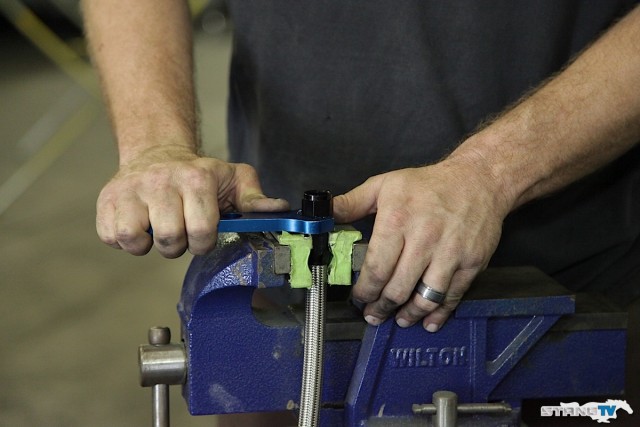
Part of building a fuel system for your Mustang is making fuel lines. Aeromotive supplies enough fuel line for the install, but you have to cut the line and install the necessary fittings to make the connections from component to component.
Another major part of a fuel system is the filtration component. This Aeromotive A1000 Stealth system includes an inline fuel filter that mounts on the chassis where the stock filter is mounted. Since this fuel system uses -10 fuel lines, the filter uses a -10 AN inlet and outlet arrangement.
“There’s a 100-micron filter on the pump, and a 10-micron inline filter,” says Jared Cox, Aeromotive’s head of research and development. A 10-micron filter element is used within the aluminum filter housing, and it’s designed to catch any particulate matter that might do harm upstream within the fuel system.
Every fuel system component is vitally important, but perhaps none more important than the fuel line itself. The fuel won’t make it to the engine without it, so the Aeromotive Stealth system comes with the braided fuel line needed to get the job done. The installation of the fuel line is possibly the most labor–and tool–intensive, part of the job.
You will need an AN wrench to install a fuel system, but there are also tools you will need to marry the fuel fittings to the fuel line, as well. Koul Tools, available from Jeg’s, and other outlets, makes a hose/fitting assembly kit to make AN fuel line construction very simple. If you’re going to tackle an Aeromotive fuel system install yourself, you will need such a tool kit to properly install the fuel system.
Once finished with this Aeromotive A1000 Stealth fuel system install, there’s nothing holding Project sidewayS197 back from reaching its full power potential, and it will do the same for your S197 Mustang. Being able to support 1,000 horsepower, Aeromotive’s A1000 system will allow Pawlak’s sidewayS197 room to grow, from a horsepower standpoint. In its current state, Pawlak figures the combo is good for 600-rwhp with the stock Coyote engine. However, if Pawlak steps up the engine with a built Coyote combination, along with more boost, the Aeromotive A1000 system will still be able to support whatever he wants to throw at it.



